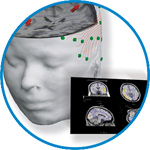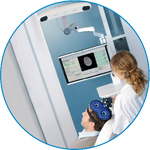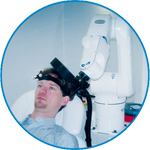- Home
- About ANT
-
Products

asa
asa is a highly flexible EEG/ERP and MEG analysis package with a variety of source reconstruction, signal analysis and MRI processing features.
.jpg)
eego mylab
The new frontier in multimodal brain research. With up to 16 kHz sampling rate, 256 EEG channels and unique software features, eego mylab gives you an unprecedented in-depth understanding of the human brain.

eego sports
eego sports offers complete freedom to collect high-density EEG data, bipolar EMG signals, and a variety of physiological sensor data, wherever and whenever required, with publish quality data in less than 15 minutes!

waveguard net
The waveguard net sets a new standard for research applications requiring high-density EEG data acquisition with quick preparation time, high flexibility, and subject comfort.

visor2
Our new and upgraded visor2 solutions integrate all the latest technologies for navigated rTMS, dual-coil navigation support, EEG-TMS recordings and pre-surgical evaluation for the highest quality in research and clinical procedures.

powerMAG ANT
The PowerMAG ANT 100 rTMS stimulator is designed for the specific needs of high-end TMS applications. Powerful high-frequency TMS as well as high precise single pulse and repetitive pulse protocols are combined in one single device.

xensor
xensor offers the solution for digitization of 3D electrode positions. xensor takes care of the whole procedure; it records, visualizes and stores positions acquired with a dedicated digitizer.

waveguard original
waveguard original is the cap solution for EEG measurements compatible with fMRI, MEG and TMS system. Use of active shielding guarantees performance in even the most demanding environments.

waveguard connect
waveguard connect EEG caps are a perfect match for hospitals and institutes aiming at reliable EEG, maximum uptime and great patient comfort! For optimal signal quality, the electrodes are made of pure, solid tin.

waveguard touch
waveguard touch is a dry electrode EEG cap. The unique Ag/AgCl coated soft polymer electrodes provide stable, research-grade EEG signals while maintaining subject comfort. The combination of these innovative dry electrodes and the industry-leading waveguard cap makes waveguard touch the best solution for dry EEG.

smartmove
smartmove allows planning of a complete TMS session ahead by defining stimulation sites based on anatomical MRI information and functional information like fMRI, PET or EEG/MEG.
Stay - References
- Support
- Events
- News
- Contact Us
You are here
A systematic study of head tissue inhomogeneity and anisotropy on EEG forward problem computing
A systematic study of head tissue inhomogeneity and anisotropy on EEG forward problem computing
In this study, we propose a stochastic method to analyze the effects of inhomogeneous anisotropic tissue conductivity on electroencephalogram (EEG) in forward computation. We apply this method to an inhomogeneous and anisotropic spherical human head model. We apply stochastic finite element method based on Legendre polynomials, Karhunen–Loeve expansion and stochastic Galerkin methods. We apply Volume and Wang’s constraints to restrict the anisotropic conductivities for both the white matter (WM) and the skull tissue compartments. The EEGs resulting from deterministic and stochastic FEMs are compared using statistical measurement techniques. Based on these comparisons, we find that EEGs generated by incorporating WM and skull inhomogeneous anisotropic tissue properties individually result in an average of 56.5 and 57.5% relative errors, respectively. Incorporating these tissue properties for both layers together generate 43.5% average relative error. Inhomogeneous scalp tissue causes 27% average relative error and a full inhomogeneous anisotropic model brings in an average of 45.5% relative error. The study results demonstrate that the effects of inhomogeneous anisotropic tissue conductivity are significant on EEG.

 Read more
Read more.jpg)




